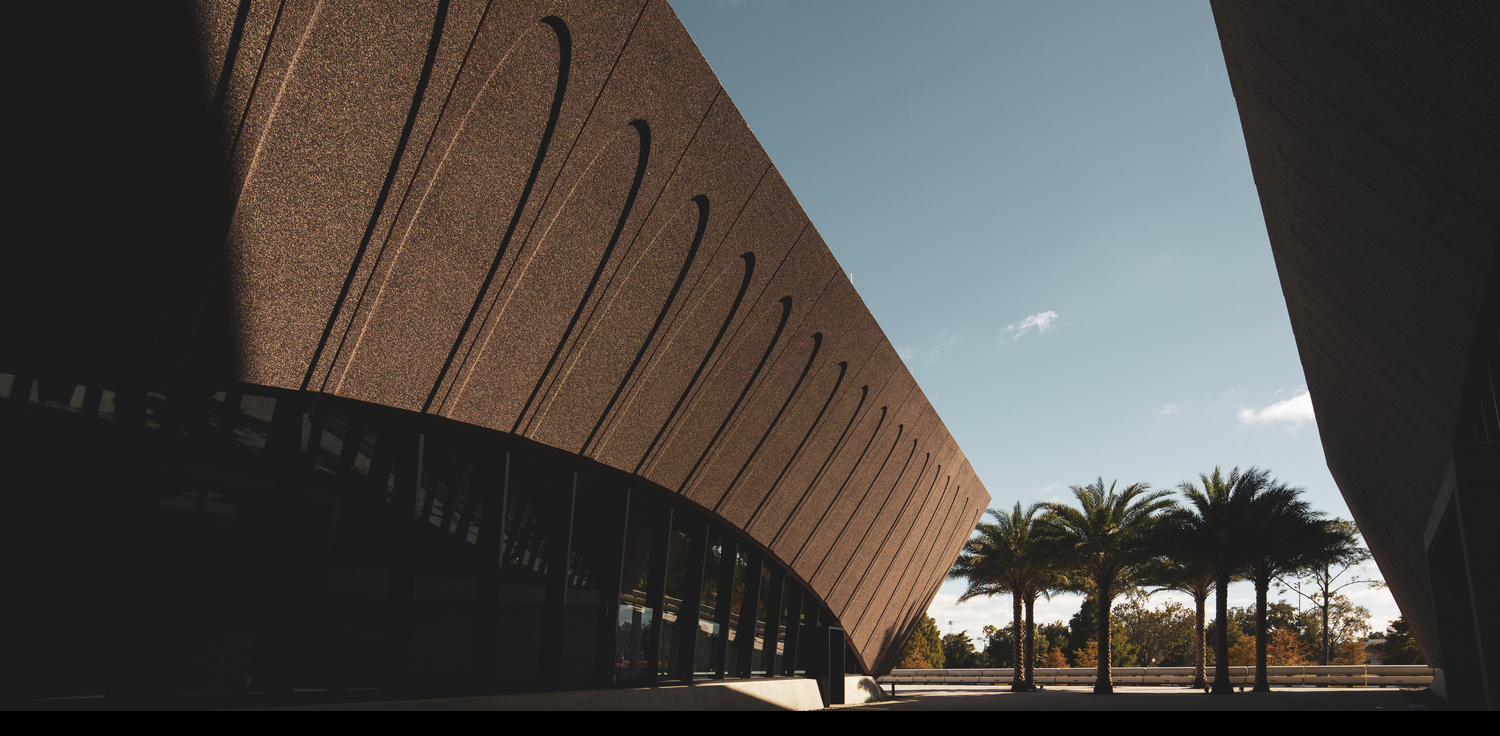Architects: Want to have your project featured? Showcase your work through Architizer and sign up for our inspirational newsletters.
After nearly a decade of excavation and construction, Switzerland’s largest cultural development in years was launched in July 2022. Comprising the Cantonal Museum of Fine Arts (MCBA), the Cantonal Museum of Contemporary Design and Applied Arts (MUDAC) and the Cantonal Museum for Photography (Photo Elysée), Plateforme 10 creates a new arts district over 25,000 square meters that straddles the disciplines of photography, design and fine arts. From the moment passengers arrive in the city, Plateforme 10 is visible. In fact, to visit, you don’t really have to leave the station at all, given that this new arts complex is housed on the former site of a railway locomotive repair shed, which was nestled on a large, narrow plot directly adjacent to Lausanne’s main train station.
From the outside, the design and site plan makes no attempt to mask the fact that visitors are entering a railway yard. The operational railway tracks form one edge of the site, while a steep retaining wall holds back a residential neighborhood that hovers just above. Rendered in concrete and gravel with minimal landscaping, the site recalls its former austere, industrial use. Four pairs of train tracks remain nestled in the gravel, along with a steel profile of the original shed, which hovers just in front of the MCBA.
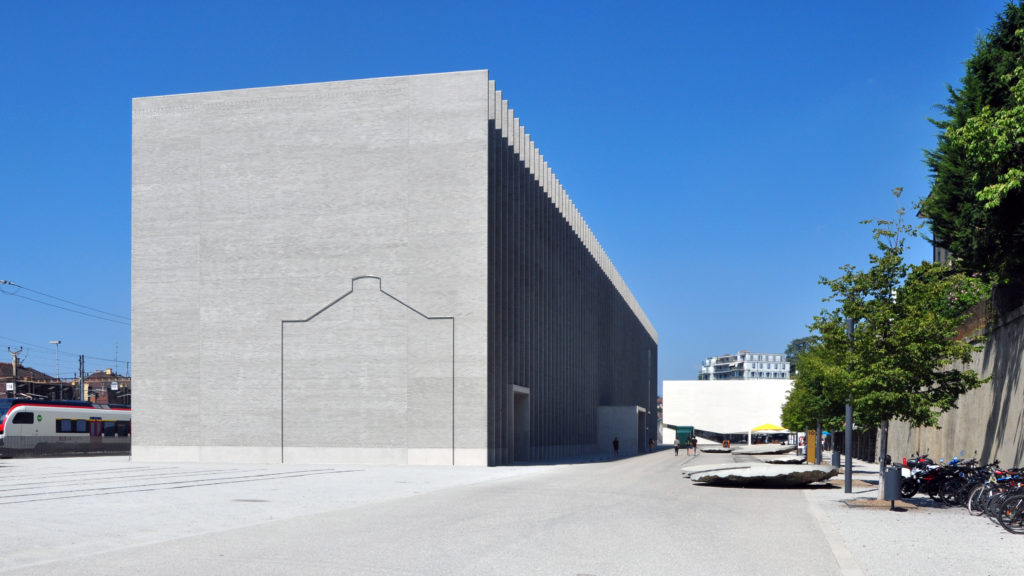
All photos courtesy of Michael Piderit
Together, the buildings that comprise the MCBA, MUDAC and Photo Elysée frame the linear site. The MCBA’s imposing, linear footprint and opposing retaining wall guide your movement down through the public esplanade; as if following rails, there is only one way to go. An arcade featuring shops and cafes is nestled into the retaining wall opposing the MCBA, featuring circular concrete benches under trees that provide a bit of respite. Along with the cafes housed within each of the museum buildings, these are the only signs of neighborhood life in an otherwise relatively stark environment. It would seem that Plateforme 10 will rely on its robust programming to animate the site, which otherwise feels solitary and exposed.
Moving down the main alley, an imposing longitudinal building recalls the forms of large, industrial factories, creating a wall that separates the railway infrastructure from the new public esplanade. Designed by the Spanish architectural firm Barozzi Veiga, who are much beloved throughout Switzerland, the MCBA is a large, monolithic building with full-height brick fins that run the length of the building.
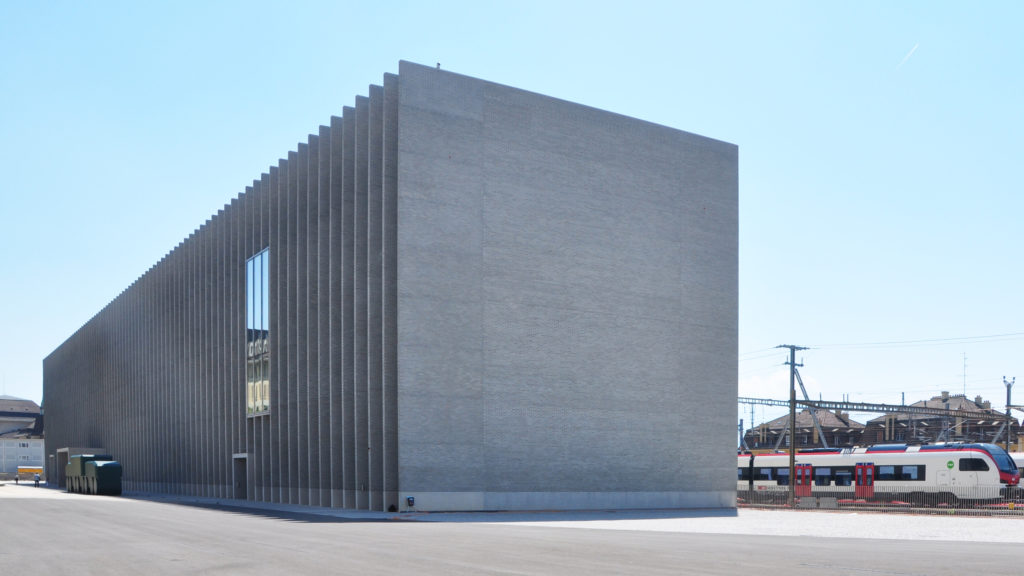
In order to protect the collections, the museum has a closed, introverted façade to the south, while a more open, permeable façade characterizes the north elevation, which is oriented towards the public esplanade. An extruded rectangle signals the entrance, opening up to reveal an expansive museum foyer. Past the stairs and up the main stairs towards the exhibition spaces, a massive glass frontage looking out onto the railyard and lake beyond reveals itself to be a fragment of a former train shed, strategically kept and incorporated into the new building’s design.
Original elements from the site reveal themselves to be integrated into the MCBA in various ways, from subtle sculptural elements to organizational devices. However, inside of the galleries themselves, one loses all visual and conceptual ties to the rail industry, as more straightforward, traditional spaces reveal a diverse collection of art ranging from contemporary sculpture to 19th-century painting. The various gallery spaces upstairs flank the main foyer and can be visited with a single continuous tour or in parallel tours, thanks to independent vertical stairwells that also allow for future flexibility when curating exhibitions.

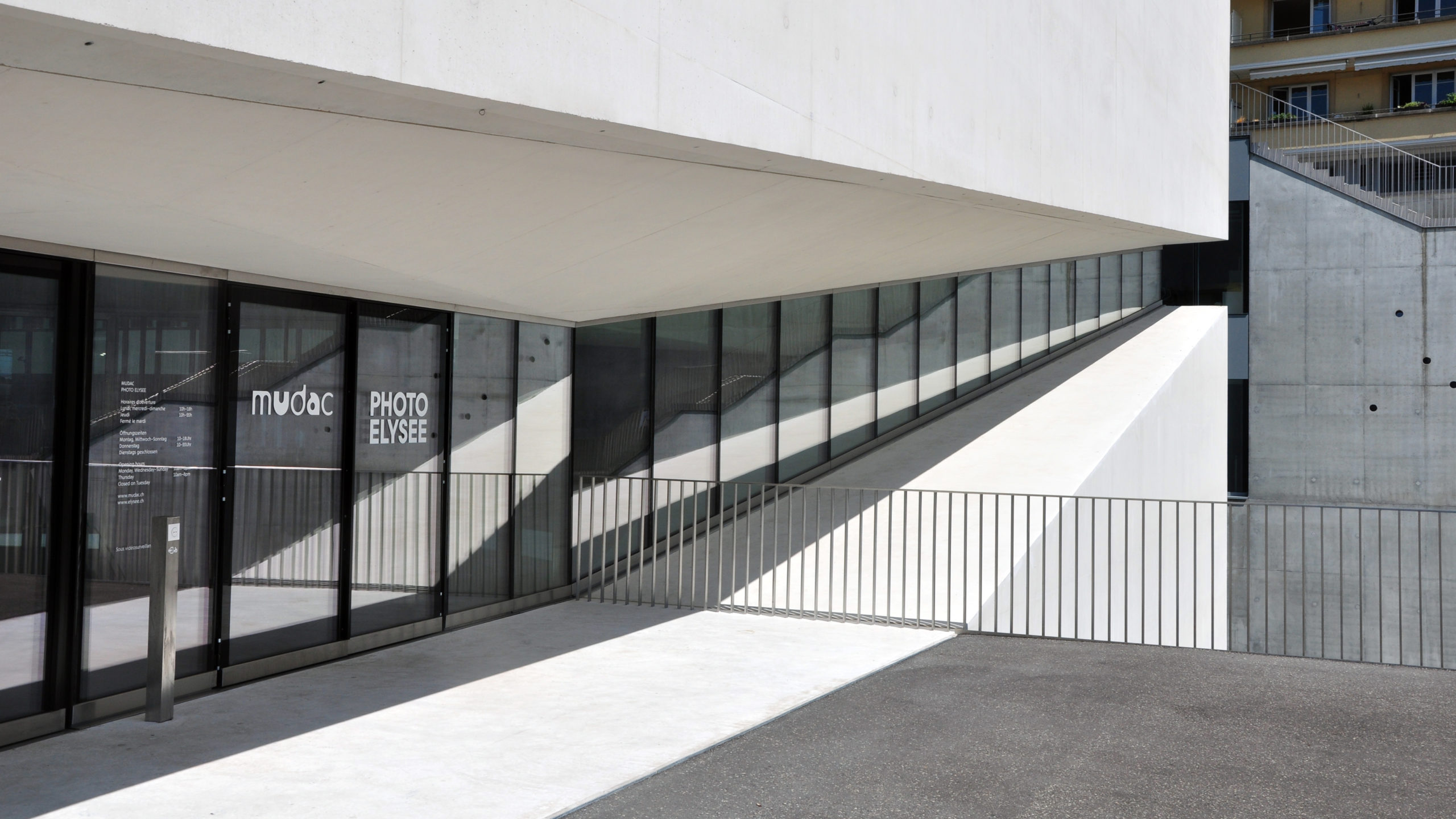 Rounding out the rear of the site, a museum comprising two institutions, the MUDAC and the Photo Elysée, presents a more playful relationship with its context. Like a box with a geometric lid in the process of being removed, the majority of the monolithic form appears to hover weightlessly above its counterpart, providing a gap with a near seamless band of glass that pierces the interiors with a jagged ray of light. In fact, this gap is not a random gesture, but separates the two institutions within the same building, as the MUDAC operates above and the Photo Elysée below. Designed by Portuguese studio Aires Mateus, their aim was to trigger a particular spatial sensation and make guests feel as if they are constantly outside.
Rounding out the rear of the site, a museum comprising two institutions, the MUDAC and the Photo Elysée, presents a more playful relationship with its context. Like a box with a geometric lid in the process of being removed, the majority of the monolithic form appears to hover weightlessly above its counterpart, providing a gap with a near seamless band of glass that pierces the interiors with a jagged ray of light. In fact, this gap is not a random gesture, but separates the two institutions within the same building, as the MUDAC operates above and the Photo Elysée below. Designed by Portuguese studio Aires Mateus, their aim was to trigger a particular spatial sensation and make guests feel as if they are constantly outside.
Upon entering, one is confronted by an origami-like undulating ceiling that seems to wrap itself across the space from floor to ceiling. As a visitor, you find yourself in a form of architectural limbo, with the choice to take the stairs up to the MUDAC or down below to the depths of the Photo Elysée. The entire complex is composed of more than 1,500 square meters of exhibition space, offering vast and adaptable modular areas for both institutions, which enables the seamless presentation of collections and the staging of temporary exhibitions. One of the inaugural exhibitions is the aptly named Let’s Meet at the Station — a wide ranging meta show that ruminates on the role of trains and train stations in our lives through popular media. With exhibition design carried out by the Interior Architecture Department at the HEAD – Genève, the stacked bricks and other industrial materials that showcase the works on display reinforce the industrial roots of the site as the exhibition enriches its railway history.
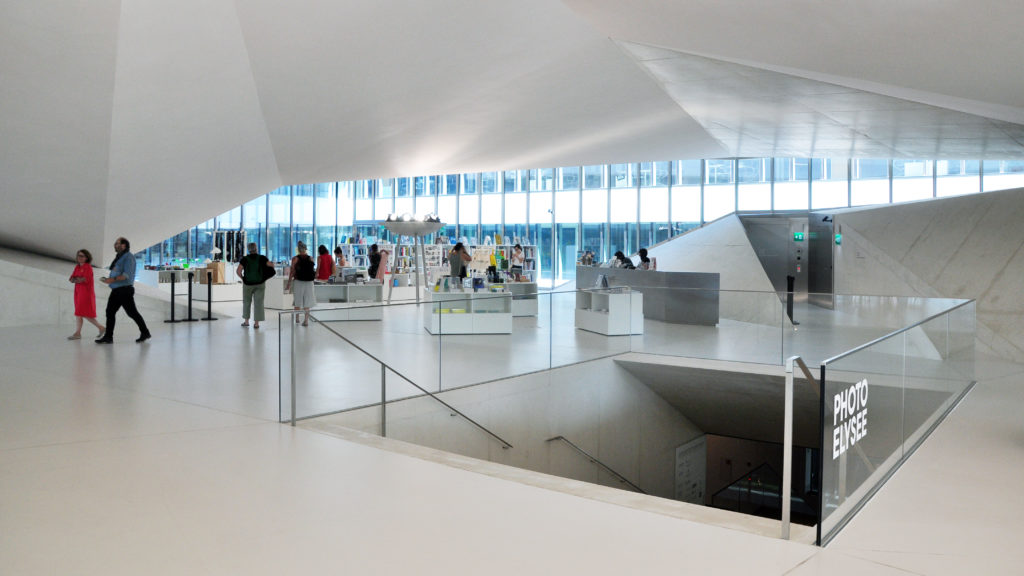
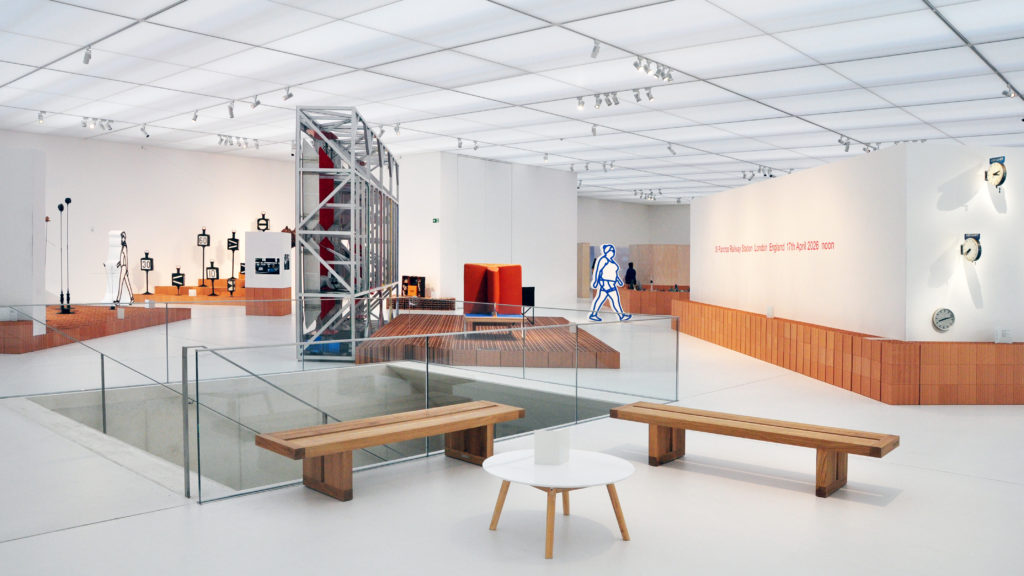 Taken as a whole, the sum of Plateforme 10’s exhibition spaces provides an opportunity for exposure to a wide variety of art, highlighting some of Switzerland’s finest current and past artists, all in convenient proximity. This is certainly aided by the fact that a single admission ticket allows the public to discover all of the exhibition spaces at their own pace, by walking between museums. As the museum’s programs continue to develop, it will be interesting to see what curatorial relationships can be juxtaposed through the synchronization of different exhibitions and events.
Taken as a whole, the sum of Plateforme 10’s exhibition spaces provides an opportunity for exposure to a wide variety of art, highlighting some of Switzerland’s finest current and past artists, all in convenient proximity. This is certainly aided by the fact that a single admission ticket allows the public to discover all of the exhibition spaces at their own pace, by walking between museums. As the museum’s programs continue to develop, it will be interesting to see what curatorial relationships can be juxtaposed through the synchronization of different exhibitions and events.
If museums and institutions are to exist like living organisms, remaining open to change and evolution, then the Plateforme 10 site succeeds in providing a blank canvas to be populated with new patterns of thinking, storytelling and exchanges of ideas. How often the museums will put forth a cohesive program that in turn populates the public esplanade to enliven this new arts district will depend on the fruitful collaboration and collective agency of these institutions.
Architects: Want to have your project featured? Showcase your work through Architizer and sign up for our inspirational newsletters.







